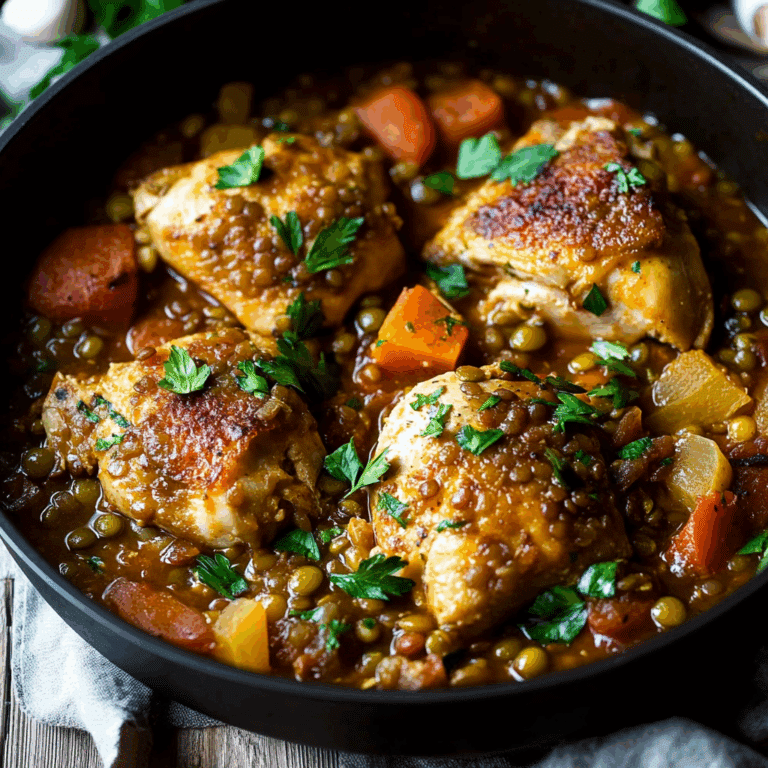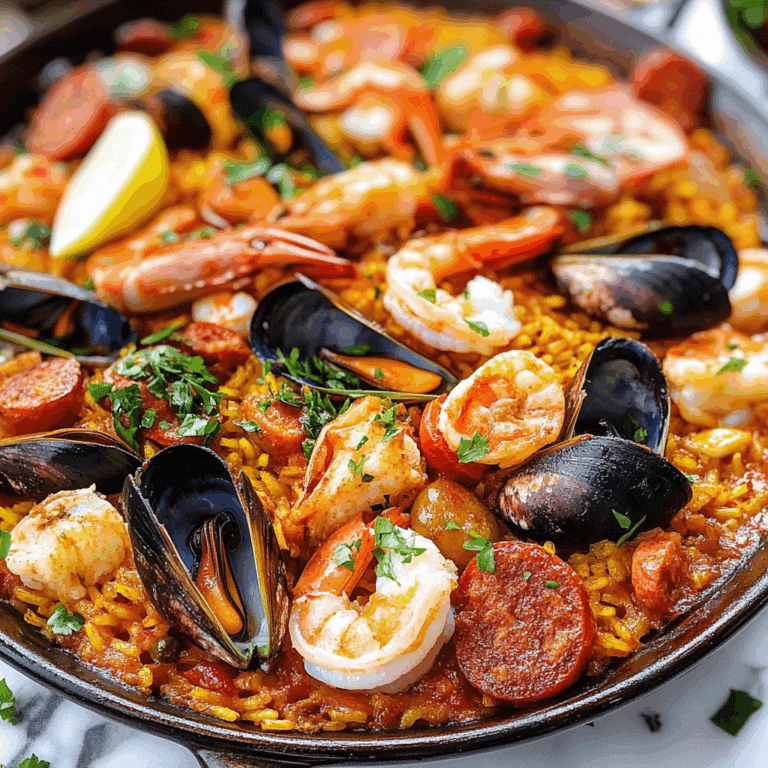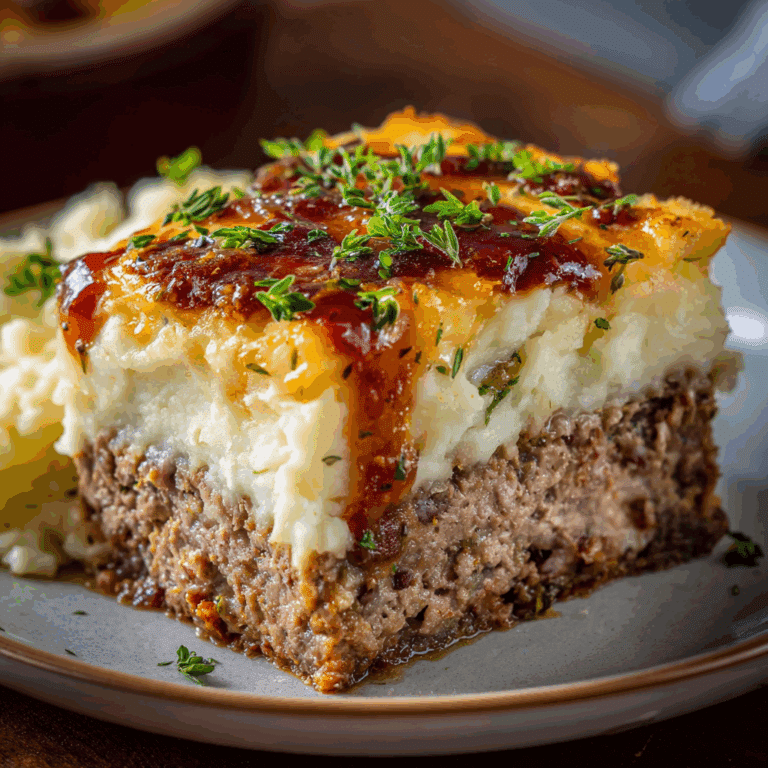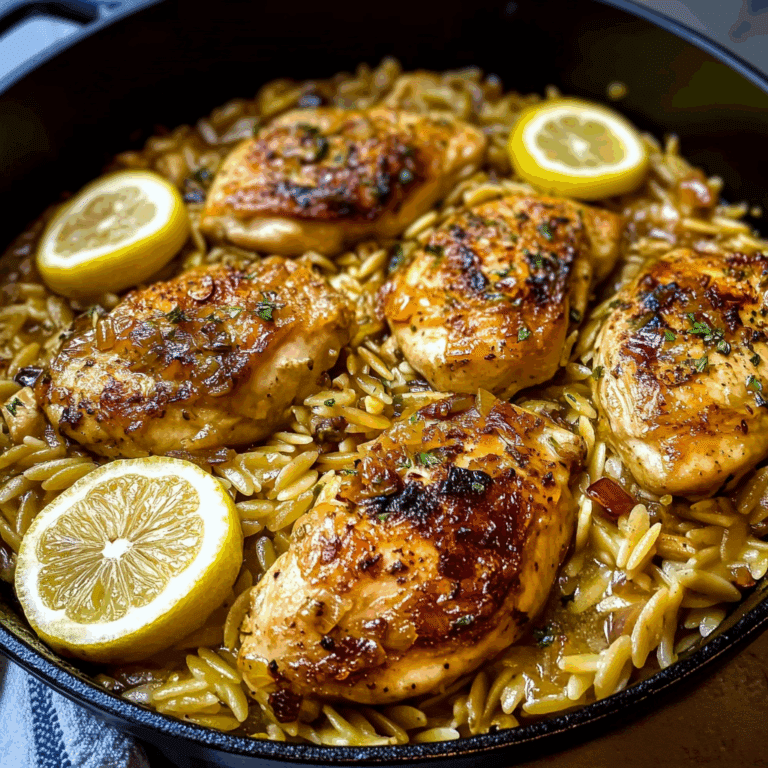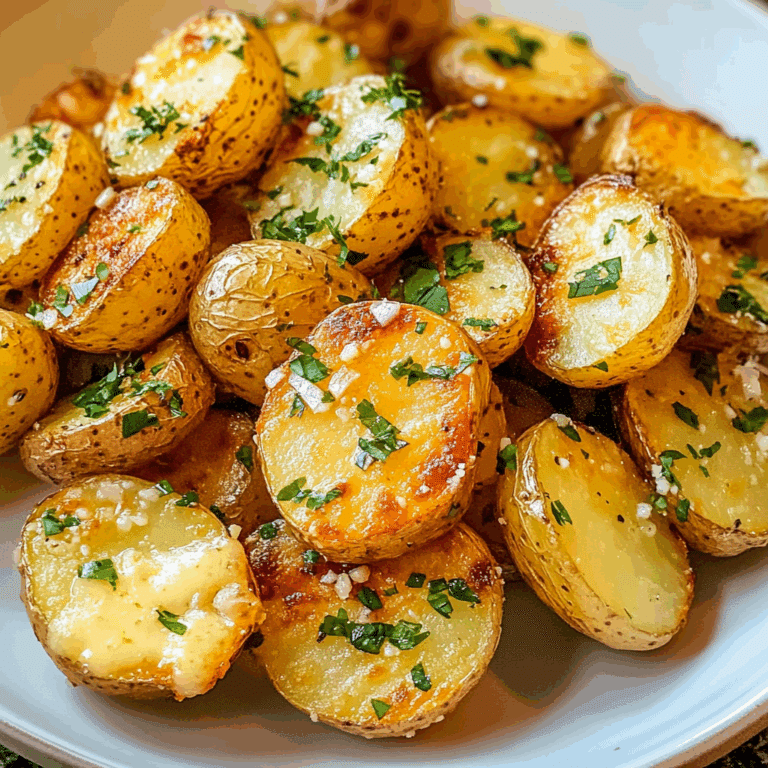How to Make Cheesy Italian Gnudi Easily
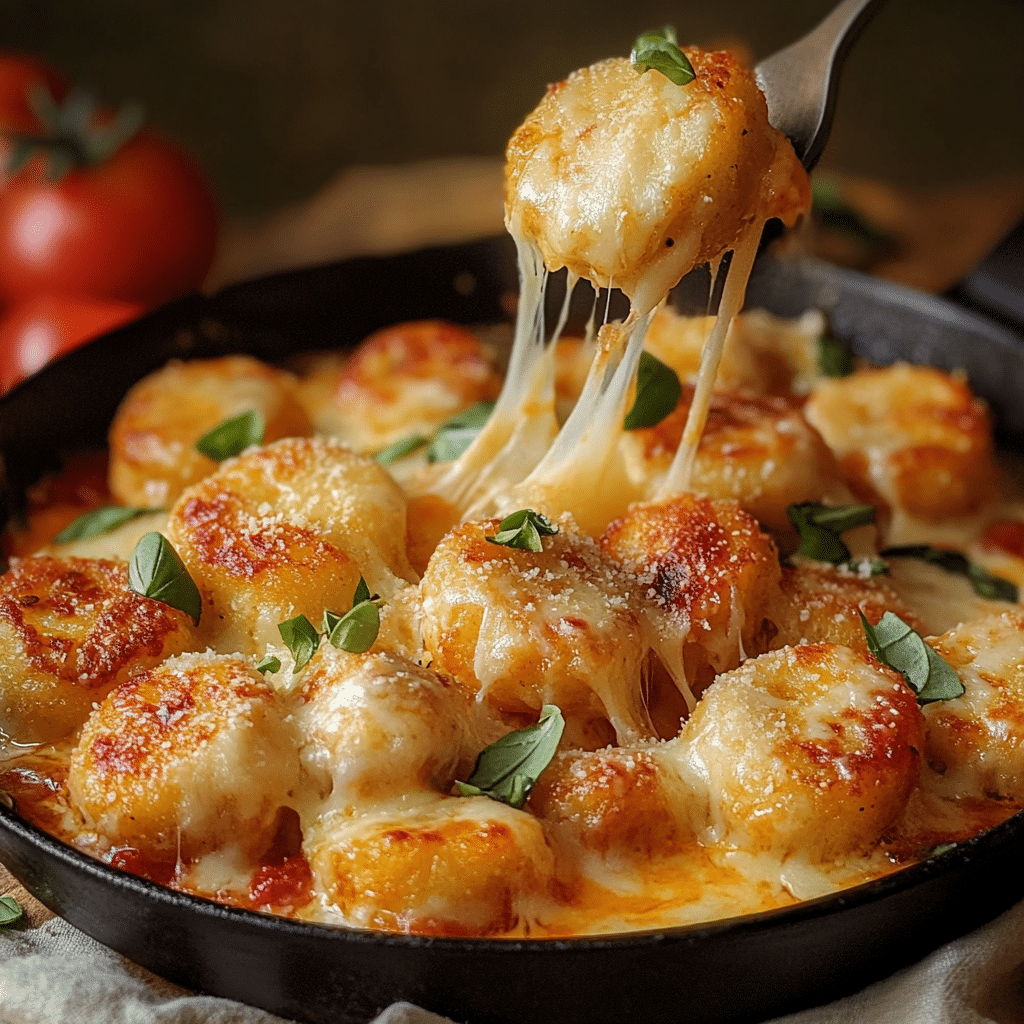
If you’re craving something creamy, comforting, and packed with robust Italian flavors, then you’re in for a treat with Cheesy Italian Gnudi. These delicate pillows of ricotta and cheese combined with fresh herbs create a melt-in-your-mouth experience that feels like a warm hug from Italy itself. Whether you’re a seasoned home cook or new to Italian cuisine, learning to make Cheesy Italian Gnudi is an effortless way to elevate your dinner table with a dish that’s both elegant and approachable.
Why You’ll Love This Recipe
- Simple yet sophisticated: Making Cheesy Italian Gnudi doesn’t require hours in the kitchen, yet it delivers restaurant-quality taste.
- Light and fluffy texture: Unlike traditional pasta, gnudi have a cloud-like softness that’s irresistible.
- Versatile meal option: Perfect as a main dish or paired with sauces and sides for a full Italian feast.
- Family-friendly comfort: Kids and adults alike will adore its creamy, cheesy goodness.
- Customizable flavors: Easily adapt with different cheeses or herbs to suit your taste.
Ingredients You’ll Need
The beauty of making Cheesy Italian Gnudi lies in its few but flavorful ingredients. Each plays a crucial role in creating that perfect melt-in-your-mouth texture, as well as the rich cheese taste and subtle herbaceous hint that makes this dish special.
- Ricotta cheese: Use fresh, whole-milk ricotta for that creamy, smooth base essential for gnudi.
- Parmesan cheese: Adds a nutty, salty flavor that deepens the overall profile of the gnudi.
- Eggs: Acts as a binder, holding the gnudi together while keeping them tender.
- All-purpose flour: Just a touch to help maintain the shape without weighing down the dish.
- Fresh herbs (basil, parsley, or sage): Introduce a fresh, aromatic element that balances the cheese’s richness.
- Salt and pepper: Essential to enhance every ingredient’s natural flavors.
- Butter or olive oil: For sautéing or finishing, adding a luxurious mouthfeel.
Variations for Cheesy Italian Gnudi
One of the joys of making Cheesy Italian Gnudi is how easy it is to tailor them to your preferences. Whether you want to experiment with different cheeses or accommodate dietary needs, this recipe invites creativity.
- Spinach gnudi: Add finely chopped, sautéed spinach to the dough for added color and nutrition.
- Gluten-free version: Substitute all-purpose flour with a gluten-free blend for those with sensitivities.
- Mix of cheeses: Try mixing ricotta with mozzarella or fontina for a different cheesy depth.
- Herb variations: Use thyme, oregano, or rosemary instead of basil for a unique herbal twist.
- Tomato sauce topping: Serve with a fresh marinara or chunky tomato sauce for a classic Italian touch.

How to Make Cheesy Italian Gnudi
Step 1: Preparing the Mixture
Start by draining any excess liquid from the ricotta to avoid soggy gnudi. Combine ricotta, grated Parmesan, egg, fresh herbs, salt, and pepper in a bowl, mixing gently until just combined. Add the flour a little at a time to create a firm but soft dough that holds shape.
Step 2: Shaping the Gnudi
Lightly flour your hands and work surface, then scoop small portions of dough and roll them into oval or round dumplings about the size of a large walnut. Be careful not to overwork them to maintain a delicate texture.
Step 3: Cooking the Gnudi
Bring a large pot of salted water to a gentle boil. Drop the gnudi in batches to prevent overcrowding. They will sink initially and then float to the top when cooked, which usually takes about 2-3 minutes. Remove them with a slotted spoon carefully.
Step 4: Finishing Touches
Melt some butter in a pan and gently toss the cooked gnudi in it to add flavor and a slight sheen. Alternatively, drizzle with olive oil or toss with fresh sage leaves for an aromatic finish.
Pro Tips for Making Cheesy Italian Gnudi
- Drain ricotta well: Excess moisture can cause your gnudi to fall apart, so always strain ricotta overnight or press with paper towels.
- Keep water at a gentle simmer: Boiling too hard may break your delicate gnudi before they’re cooked.
- Chill dough if too soft: If dough feels sticky, refrigerate for 30 minutes to firm up for easy shaping.
- Use fresh herbs wisely: Chop herbs finely to distribute flavor evenly without overwhelming the gnudi.
- Cook in small batches: Overcrowding the pot leads to sticking and uneven cooking.
How to Serve Cheesy Italian Gnudi
Garnishes
A sprinkle of freshly grated Parmesan, a drizzle of browned butter, or a scattering of crisp sage leaves elevate gnudi’s rustic elegance beautifully while adding layers of flavor and texture.
Side Dishes
Serve Cheesy Italian Gnudi alongside a simple mixed green salad with balsamic vinaigrette, roasted seasonal vegetables, or a light tomato and cucumber salad to balance the richness.
Creative Ways to Present
For gatherings, present gnudi in elegant shallow bowls topped with a vibrant herb oil drizzle or a lemon butter sauce for that festive touch. You can also plate them on toasted garlic bread for a delightful crunch contrast.
Make Ahead and Storage
Storing Leftovers
Place cooled gnudi in an airtight container and refrigerate for up to 2 days. Avoid stacking them to prevent sticking or squishing.
Freezing
Freeze uncooked gnudi arranged in a single layer on a parchment-lined tray. Once solid, transfer to a freezer bag and store for up to 3 months. Cook directly from frozen by increasing boiling time slightly.
Reheating
Reheat leftover gnudi gently in a skillet with a splash of olive oil or butter, or briefly poach in simmering water until warmed through without overcooking to keep their tender texture.
FAQs
What’s the difference between gnudi and gnocchi?
Gnudi are primarily made from ricotta cheese and flour without potatoes, resulting in a lighter, softer texture compared to gnocchi, which uses potatoes as a base.
Can I use part-skim ricotta for this recipe?
While whole-milk ricotta is preferred for its creaminess, part-skim can work but may yield slightly less rich and creamy gnudi.
How do I prevent gnudi from sticking together?
Ensure you lightly flour your hands when shaping and cook them in batches with enough water space, stirring gently to keep them separate.
Is it necessary to add flour to the mixture?
Yes, a small amount of flour helps bind the ricotta and cheese mixture so that the gnudi hold their shape during cooking.
Can Cheesy Italian Gnudi be made vegan?
Traditional gnudi rely on cheese and eggs for texture and flavor, but you can experiment with vegan ricotta alternatives and egg substitutes for a plant-based version.
Final Thoughts
Once you try making Cheesy Italian Gnudi at home, you’ll discover a new favorite that’s both comforting and impressively elegant. This recipe’s simplicity and charm invite you to savor every bite while sharing a piece of authentic Italian joy with your loved ones. Give it a go and watch how this delicious dish transforms your meal times into special occasions.
Related Posts
- How to Make Creamy Chicken Tortellini with Broccoli
- How to Make Chicken in Puff Pastry with Mustard Cream Sauce
- Best Oven Roasted Yukon Gold Potatoes Recipe
Cheesy Italian Gnudi
Cheesy Italian Gnudi are delicate, creamy ricotta and cheese pillows flavored with fresh herbs. Light, fluffy, and comforting, these traditional Italian dumplings offer a melt-in-your-mouth texture and a simple yet sophisticated dish perfect for elevating any meal.
- Prep Time: 20 minutes
- Cook Time: 10 minutes
- Total Time: 30 minutes
- Yield: 4 servings 1x
- Category: Appetizers
- Method: Boiling and Sautéing
- Cuisine: Italian
- Diet: Vegetarian (can be adapted to Gluten Free)
Ingredients
Cheese and Dairy
- 1 ½ cups fresh whole-milk ricotta cheese, well drained
- ½ cup grated Parmesan cheese
- 1 large egg
Dry Ingredients
- ½ cup all-purpose flour (or gluten-free blend for gluten-free option)
- Salt, to taste
- Freshly ground black pepper, to taste
Herbs and Flavorings
- 2 tablespoons finely chopped fresh basil, parsley, or sage
For Cooking and Finishing
- Butter or olive oil, for sautéing or finishing
Instructions
- Preparing the Mixture: Drain any excess liquid from the ricotta to prevent soggy gnudi. In a bowl, gently combine the ricotta, grated Parmesan, egg, fresh herbs, salt, and pepper until just mixed. Gradually add the flour a little at a time until you achieve a firm but soft dough that can hold its shape.
- Shaping the Gnudi: Lightly flour your hands and the work surface. Scoop small portions of dough and roll them gently into oval or round dumplings about the size of a large walnut. Avoid overworking to keep the texture delicate.
- Cooking the Gnudi: Bring a large pot of salted water to a gentle boil. Cook the gnudi in batches to avoid overcrowding. They will sink first, then float to the top when done, usually after 2-3 minutes. Remove carefully with a slotted spoon.
- Finishing Touches: Melt butter in a pan and toss the cooked gnudi gently to add flavor and a slight sheen. Alternatively, drizzle with olive oil or toss with fresh sage leaves for an aromatic finish.
Notes
- Drain ricotta well by straining overnight or pressing with paper towels to prevent gnudi from falling apart.
- Keep cooking water at a gentle simmer to avoid breaking delicate gnudi.
- If dough is too sticky, chill it in the refrigerator for 30 minutes to firm up before shaping.
- Chop fresh herbs finely to evenly distribute flavor without overwhelming the dish.
- Cook gnudi in small batches to prevent sticking and ensure even cooking.
Nutrition
- Serving Size: 1 serving (about 6 gnudi)
- Calories: 280 kcal
- Sugar: 1 g
- Sodium: 320 mg
- Fat: 18 g
- Saturated Fat: 10 g
- Unsaturated Fat: 6 g
- Trans Fat: 0 g
- Carbohydrates: 15 g
- Fiber: 1 g
- Protein: 12 g
- Cholesterol: 90 mg
Keywords: Cheesy Italian Gnudi, ricotta dumplings, Italian comfort food, gnudi recipe, homemade Italian gnudi



